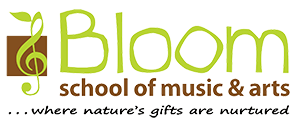Mothers are the best in the world (2021)
The best thing my Mum did for me was to let me learn music. I attended music lessons at Yamaha from when I was in preschool, all through polytechnic. Eventually I stopped lessons when I became a Mum myself!
One of the elements of music I learnt at Yamaha is solfège. The naming system (do, re, mi, fa, sol, la, ti, do) helped me to recognise musical notes, and it definitely made music learning easier, and more fun.
So what is solfège, and why is it a good way for young children to learn music?
Here, Samuel Chase explains that solfège “is a system of notation in which every note of a scale is given a specific syllable that is always said for that note”; it is like the Alphabet, but for music. Solfège is another method of notating and writing music.
Solfège is also a widely known system for teaching pitch, and developing pitch memory. Sarah Richard-Preston explains that solfège does so by “requiring the student to hear the note in their mind’s ear, thus honing their listening and aural skills”. And because solfège “focuses on the use of voice (rather than an instrument), it is the perfect way for young children to learn pitch naturally”.
The two ways of learning solfège, the ‘fixed do‘ and the ‘moveable do‘ systems are helpful tools for developing muscle memory for pitch, especially when used together with the Curwen/Glover hand signs.

Curwen/Glover hand signs used in conjunction with solfège (left to right): Do, Re, Mi, Fa, Sol, La, Ti, Do
Solfège has been historically recorded since the 11th century, and has been adapted time and again through the years. In the 18th century, John Spencer Curwen drew upon Sarah Glover’s Manual of the Norwich Sol-fa System, and developed hand signs to go with the solfège system. Later in the mid-twentieth century, Zoltán Kodály—a pioneer in Early Childhood Music Education—integrated these systems into his music pedagogy, widely recognised as the Kodály Method.
The hand signs are a way of showing the height and depth of the pitch. The low do begins at your lower tummy. The next hand sign (pitch) is then made above the previous one. The hand signs go upwards as the pitch goes up. The upper do ends at the eye level. To go down the scale, you do the same hand signs going downwards.
Musikgarten may not employ the solfège and Curwen/Glover system. However, Musikgarten similarly believes that integrating movement with music learning (Music & Movement) is beneficial for the holistic development of the child. Musikgarten has an extensive music curriculum, created from years of research on Early Childhood music education.

Bloom School of Music & Arts is proud to be a school in Singapore offering the acclaimed Musikgarten programme for our young, budding musicians. For more information, fill up our Online Enquiry Form, and we will get back to you!
“世上只有妈妈好” is a ballad on motherly love, originally sung by Josephine Siao in the 1960 Hong Kong film “Nobody’s Child”. Translated from Chinese to mean “Mother is the best in the world”, this familiar lullaby remains well-known to this day.
I really love this instrumental version on Youtube, featuring Seren Koo on the guzheng, a traditional Chinese stringed instrument.
My first memory of this song was from a milk powder commercial, if I recall correctly. I have been meaning to feature this song for a while now, and am glad I finally have the opportunity, by incorporating solfège, and the Curwen/Glover hand signs!
Let’s try our hand (pun intended!) at this song. I simplified the music score, so we have the very basic melody. It will be easier to learn quickly, and get used to the hand signs. For simplicity’s sake, I put the hand signs above each musical note, so you can decide the best way to learn this melody, and eventually perform it for your mother, whether on the piano, or just with the hand signs as you sing.
Solfège is a wonderful, alternate way to learn the universal language music is known to be. With this post, I hope you have learnt something new, and enjoyed trying out this fun and useful method of learning music.
If you did perform this song for Mummy, record a video, and tag us on Instagram @bloomschoolsg, and hashtag #bloomschoolperformance. We would love to see your performance too, and cheer you on in your musical journey!
To all Mums, and mothers at heart, Happy Mothers’ Day!















